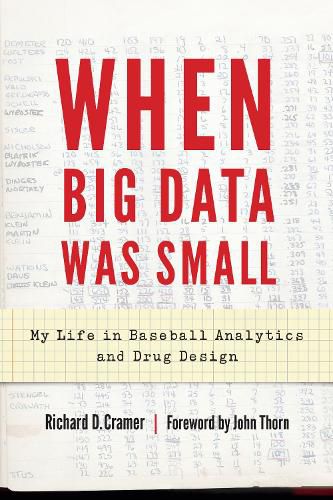Readings Newsletter
Become a Readings Member to make your shopping experience even easier.
Sign in or sign up for free!
You’re not far away from qualifying for FREE standard shipping within Australia
You’ve qualified for FREE standard shipping within Australia
The cart is loading…






Richard D. Cramer has been doing baseball analytics for just about as long as anyone alive, even before the term sabermetrics existed. He started analyzing baseball statistics as a hobby in the mid-1960s, not long after graduating from Harvard and MIT. He was a research scientist for SmithKline and in his spare time used his work computer to test his theories about baseball statistics. One of his earliest discoveries was that clutch hitting-then one of the most sacred pieces of received wisdom in the game-didn’t really exist. In When Big Data Was Small Cramer recounts his life and remarkable contributions to baseball knowledge.
In 1971 Cramer learned about the Society for American Baseball Research (SABR) and began working with Pete Palmer, whose statistical work is credited with providing the foundation on which SABR is built. Cramer cofounded STATS Inc. and began working with the Houston Astros, Oakland A’s, Yankees, and White Sox, with the help of his new Apple II computer.
Yet for Cramer baseball was always a side interest, even if a very intense one for most of the last forty years. His main occupation, which involved other big data activities, was that of a chemist who pioneered the use of specialized analytics, often known as computer-aided drug discovery, to help guide the development of pharmaceutical drugs. After a decade-long hiatus, Cramer returned to baseball analytics in 2004 and has done important work with Retrosheet since then. When Big Data Was Small is the story of the earliest days of baseball analytics and computer-aided drug discovery.
$9.00 standard shipping within Australia
FREE standard shipping within Australia for orders over $100.00
Express & International shipping calculated at checkout
Richard D. Cramer has been doing baseball analytics for just about as long as anyone alive, even before the term sabermetrics existed. He started analyzing baseball statistics as a hobby in the mid-1960s, not long after graduating from Harvard and MIT. He was a research scientist for SmithKline and in his spare time used his work computer to test his theories about baseball statistics. One of his earliest discoveries was that clutch hitting-then one of the most sacred pieces of received wisdom in the game-didn’t really exist. In When Big Data Was Small Cramer recounts his life and remarkable contributions to baseball knowledge.
In 1971 Cramer learned about the Society for American Baseball Research (SABR) and began working with Pete Palmer, whose statistical work is credited with providing the foundation on which SABR is built. Cramer cofounded STATS Inc. and began working with the Houston Astros, Oakland A’s, Yankees, and White Sox, with the help of his new Apple II computer.
Yet for Cramer baseball was always a side interest, even if a very intense one for most of the last forty years. His main occupation, which involved other big data activities, was that of a chemist who pioneered the use of specialized analytics, often known as computer-aided drug discovery, to help guide the development of pharmaceutical drugs. After a decade-long hiatus, Cramer returned to baseball analytics in 2004 and has done important work with Retrosheet since then. When Big Data Was Small is the story of the earliest days of baseball analytics and computer-aided drug discovery.